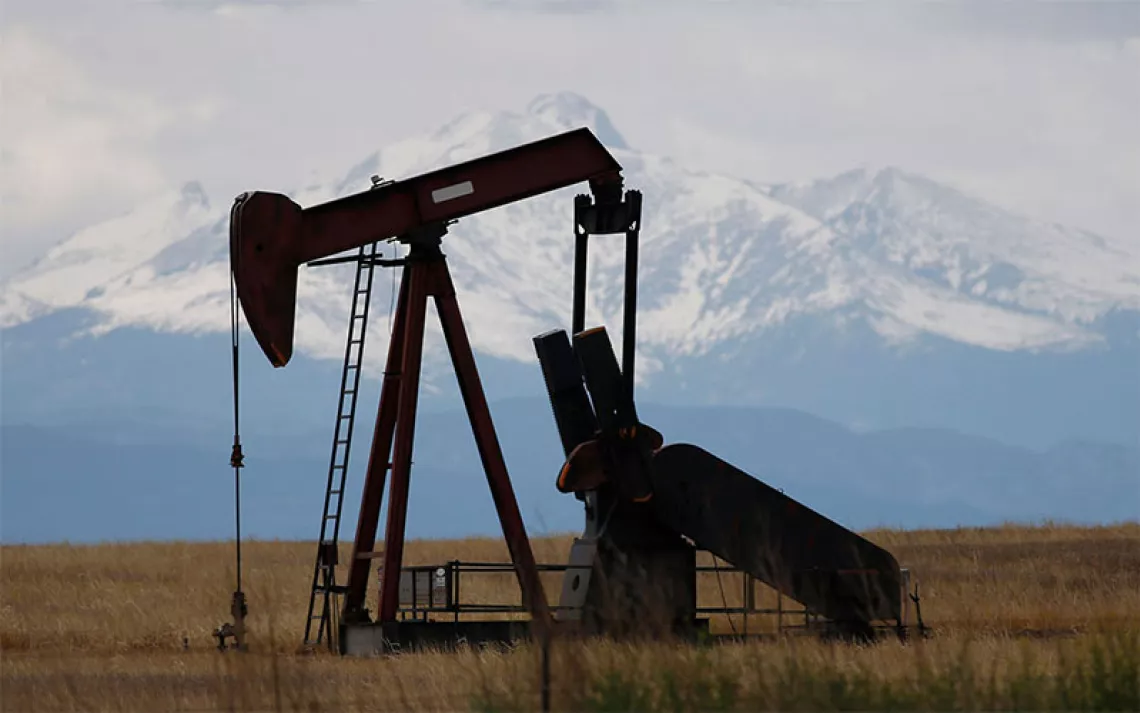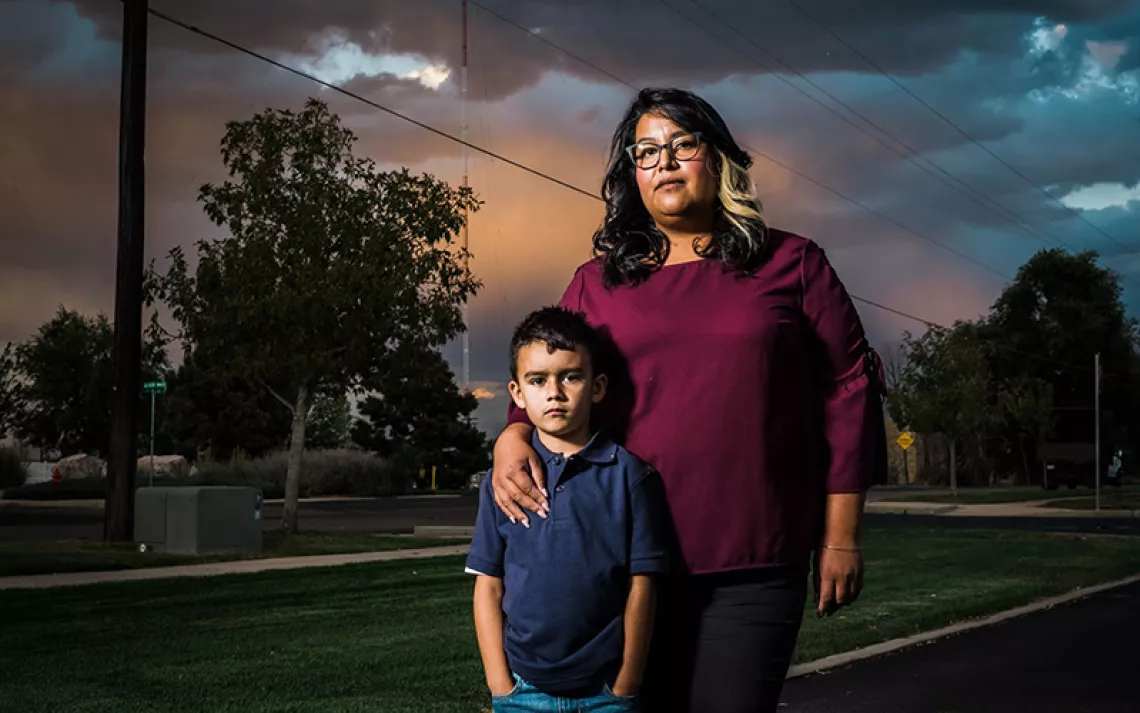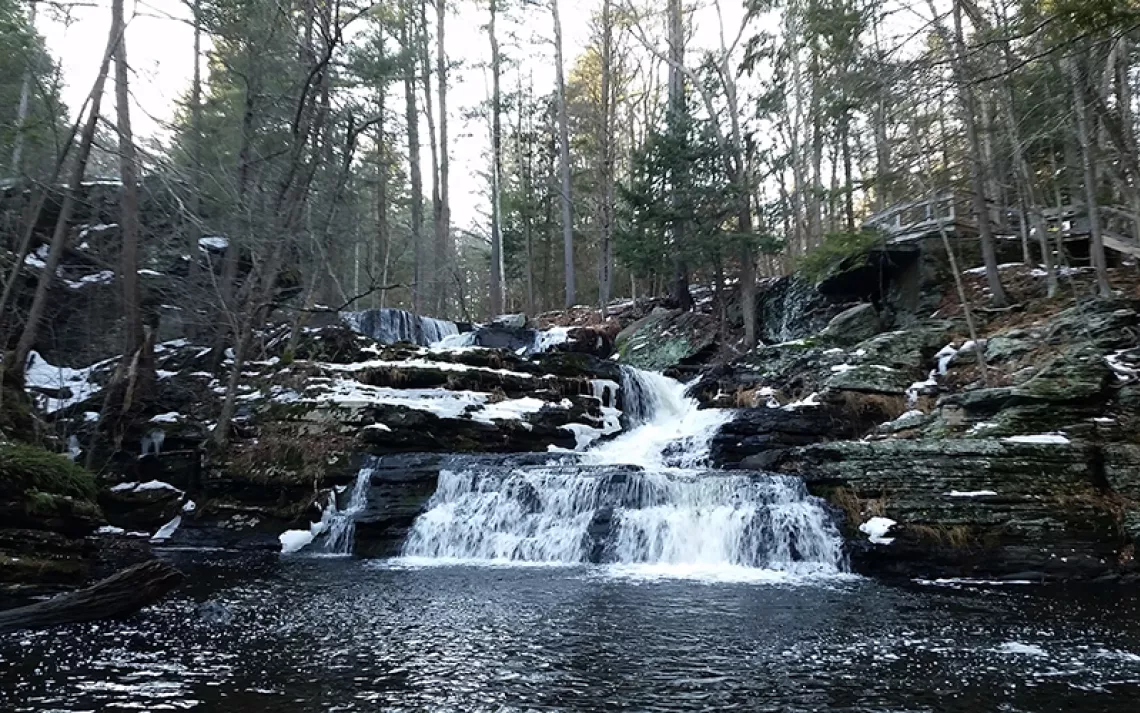Not a Pretty Picture: Life at the Epicenter of Fracking Country
Photographers reveal the damage and disruptions from the shale gas boom
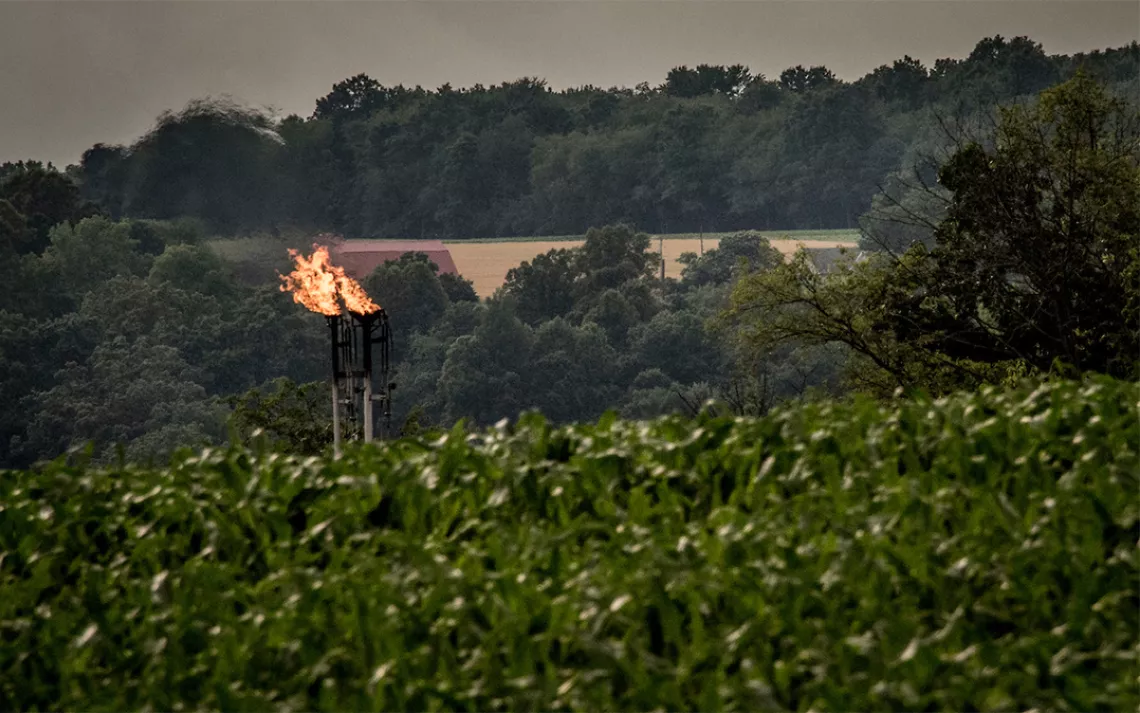
0 0 1 26 149 Sierra Club 1 1 174 14.0 Normal 0 false false false EN-US JA X-NONE /* Style Definitions */ table.MsoNormalTable {mso-style-name:"Table Normal"; mso-tstyle-rowband-size:0; mso-tstyle-colband-size:0; mso-style-noshow:yes; mso-style-priority:99; mso-style-parent:""; mso-padding-alt:0in 5.4pt 0in 5.4pt; mso-para-margin-top:0in; mso-para-margin-right:0in; mso-para-margin-bottom:8.0pt; mso-para-margin-left:0in; line-height:107%; mso-pagination:widow-orphan; font-size:11.0pt; font-family:Calibri; mso-ascii-font-family:Calibri; mso-ascii-theme-font:minor-latin; mso-hansi-font-family:Calibri; mso-hansi-theme-font:minor-latin;}
In western Pennsylvania, the landscape of many farms has already changed. Here, a flare burns natural gas from a well near a cornfield in Pulaski Township, Lawrence County.
|Photos by Karen Kasmauski and Garth Lenz | Captions by Mary Greene | Photos courtesy of Environmental Integrity Project and International League of Conservation Photographers
I’ve long maintained that had the rush for shale gas first taken off in the oil patches of Texas or the Mountain West, perhaps fracking would not have become the environmental villain it is today. To be clear, hydraulic fracturing poses threats to public health and the environment no matter where it occurs: Dangers to groundwater, intensified leakage of heat-trapping methane, and increased ground-level ozone have been associated with gas fracking at sites across the United States. But I think it’s fair to say that fracking has become such a focus of environmentalist opposition, in part, because its first boom occurred in the woodlands of Pennsylvania.
Unfortunately, many people from the west have become inured to the sights and sounds of exploiting the earth. We grew up near miles-long mega-mines, forest clearcuts, and fields of pumpjacks. Living in or near an environmental sacrifice zone means that one can become numb to scars on the land, sad though it may be. But for many easterners (at least those outside of the Appalachian coalfields or the Maine logging towns) such sights are, or were, foreign.
So when the gas rush suddenly descended on Pennsylvania in 2008, it was a shock to the residents. Folks living on top of the Marcellus Shale were unaccustomed to heavy industry installations lurking behind the trees, the gas flares at all hours, and the big trucks tearing up the backroads. The gas boom shattered their bucolic quality of life—and as it did, it ignited a grassroots opposition that, today, is among the strongest, boldest arms of the broader environmental movement.
Filmmaker Josh Fox, a Pennsylvania native, brought that story to life with his Oscar-nominated documentary Gasland. Now, a new multimedia presentation is taking the story further. Photographers Karen Kasmauski and Garth Lenz have teamed up with the Environmental Integrity Project to profile Pennsylvania residents who have found themselves at the epicenter of the fracking boom.
It’s not a pretty picture. Kasmauski and Lenz’s images from Pennsylvania show fracking pads and gas compressor stations slicing through local woodlands, gas flares flaming above cornfields, and kids struggling with asthma. They also illustrate how the fear of fracking has spread southward to Maryland, where many residents are fearful that a two-year moratorium on fracking is set to expire in October 2017.
This new photography project clearly illustrates how the gas boom has disrupted people’s pleasant quality of life. But a lot more is at stake than quiet roads and starry skies. Air quality and water quality are also at risk—and that should serve as a warning to all Americans, regardless of where they live.
—Jason Mark
♦
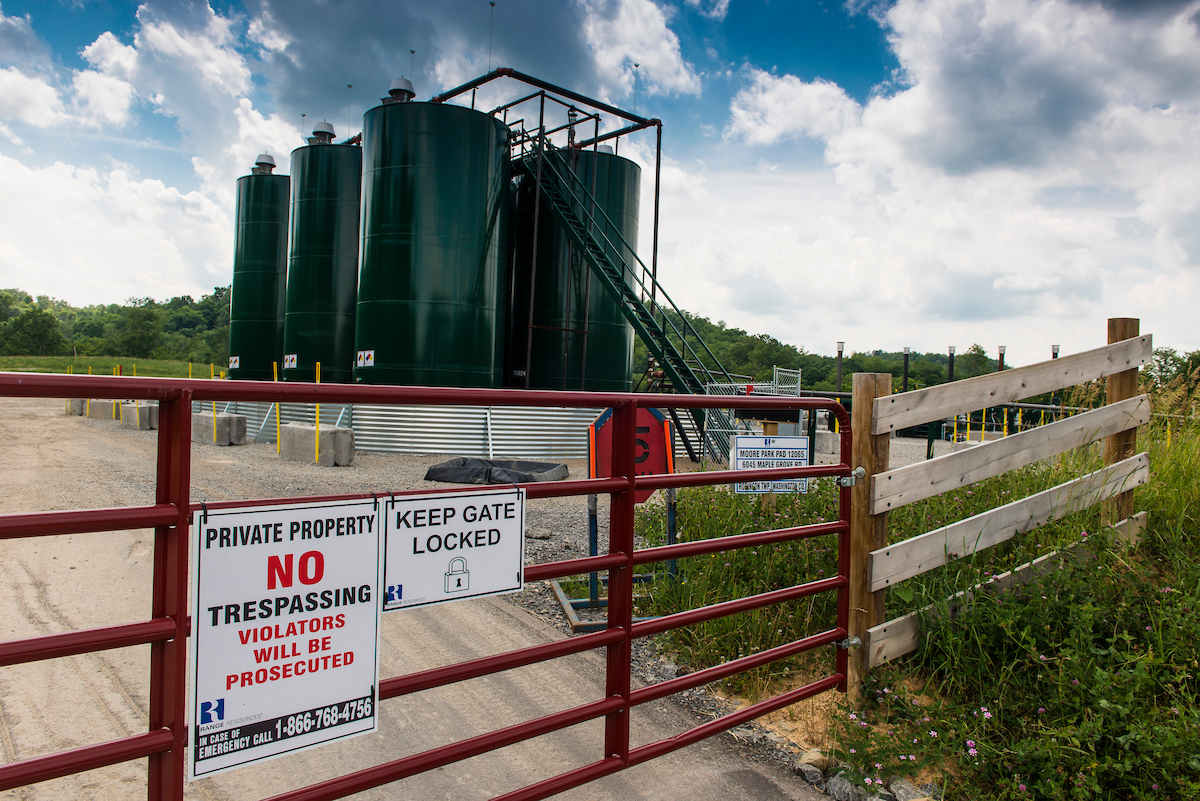
As fracking sparked a shale gas boom, the new crops that sprouted up all over farmland in southwest Pennsylvania were drilling rigs, well pads, tanks, pipelines, and gas processing plants. These are condensate tanks at a Range Resources well pad in Washington County, Robinson Township.
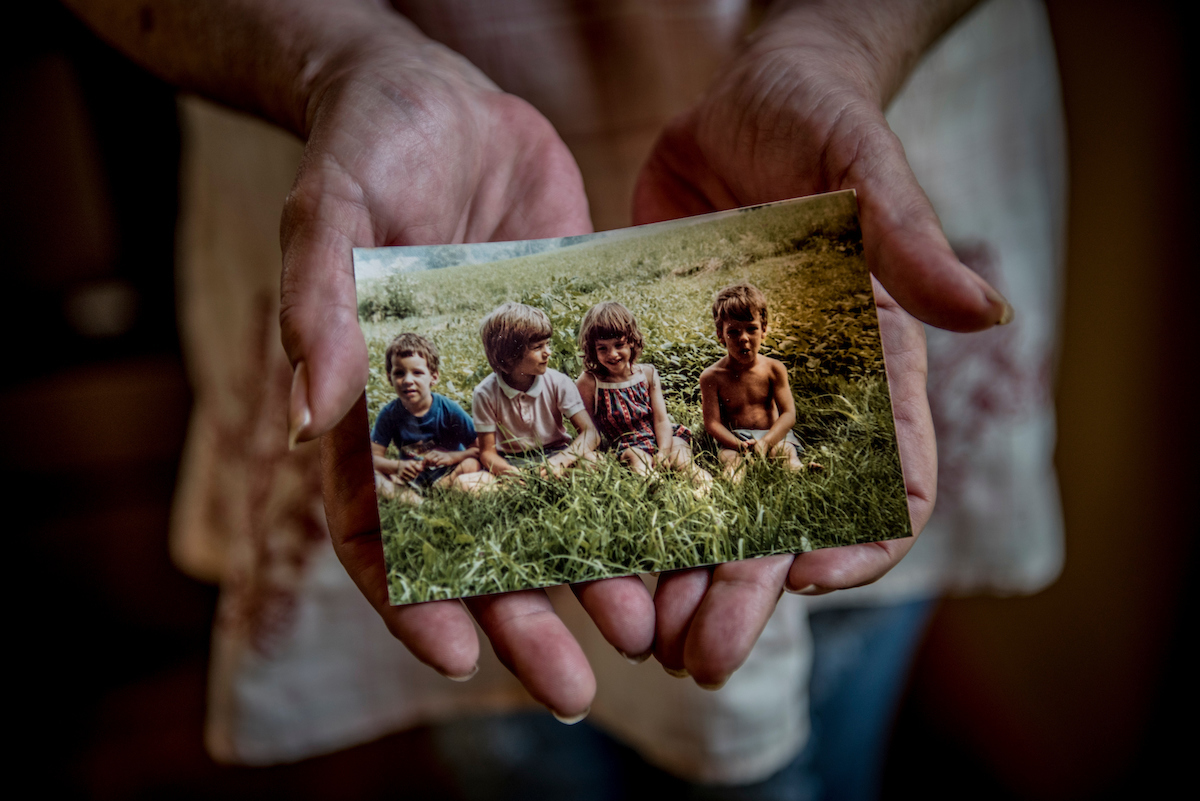
Western Pennsylvania farmer Vicki Duran holds a photo of four of her five children. Since the arrival of fracking, their family farm has been surrounded by gas wells, compressor stations, and processing plants. Hundreds of tanker trunks and other heavy vehicles now roar down their narrow country lane every day. Because of the loss of their quality of life, the Durans worry they will be driven off their land.

Alexis Elliot, a 13-year-old from Mount Pleasant Township, suffered nosebleeds, eye infections, discoloration of her hands, and excessive thirst after drillers started fracking several wells around her school. Her urine tested positive for benzene, a carcinogen that is sometimes used in the hydraulic fracturing process.
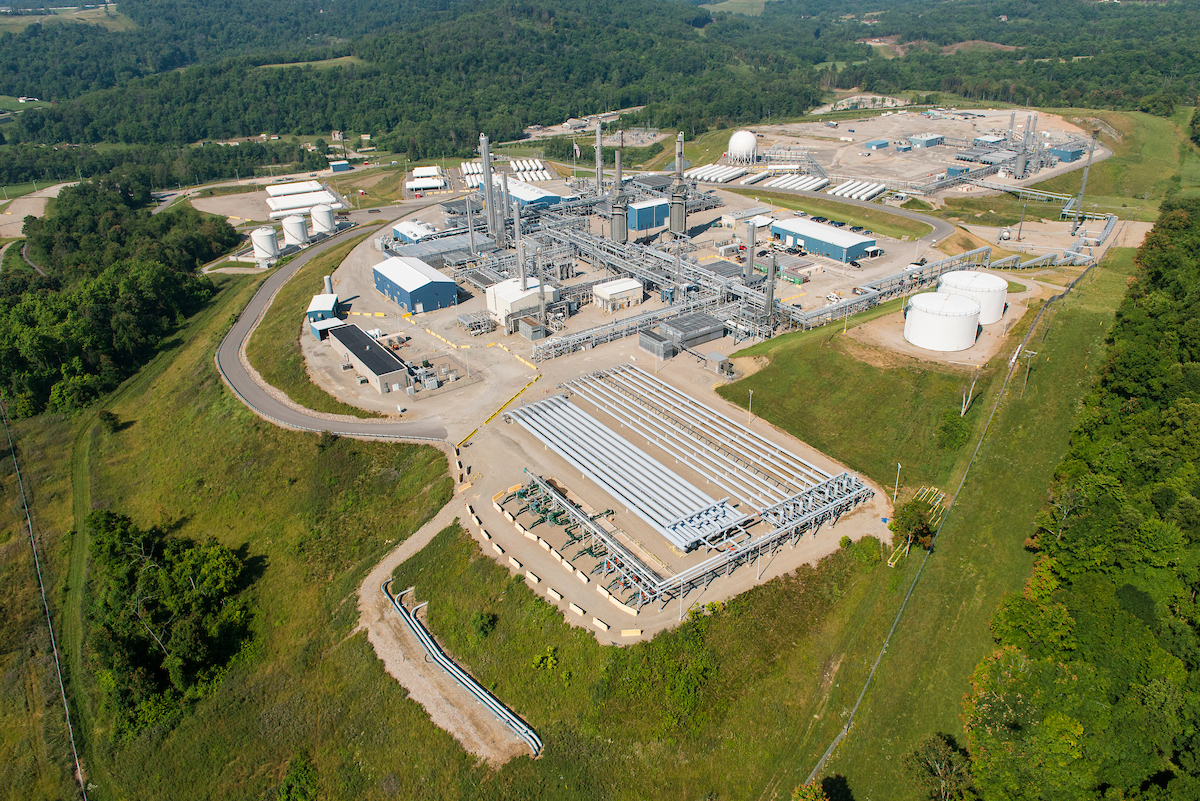
In what was once a quiet farming area in western Pennsylvania, the MarkWest cryogenic fractionation plant in Chartiers Township has been expanding rapidly. The plant, which processes natural gas products, is an example of the massive industrial infrastructure that follows hydraulic fracturing.
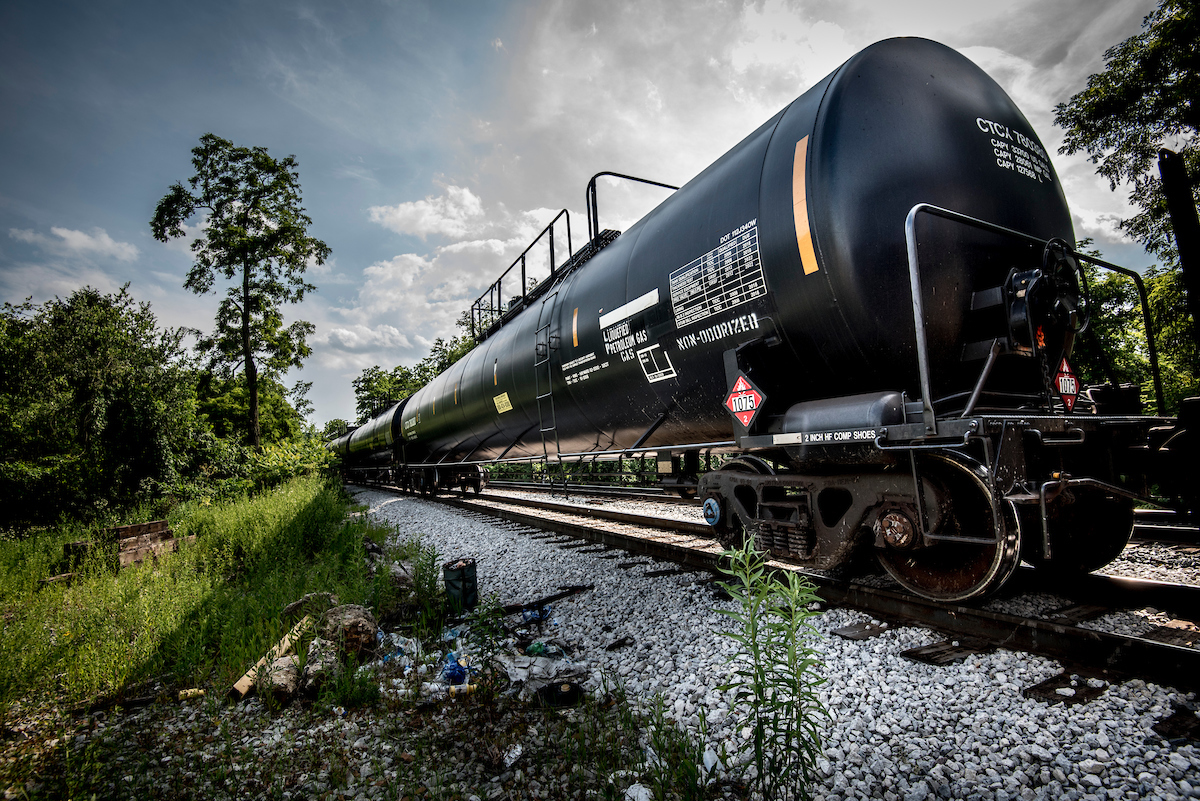
A train filled with oil and gas rumbles through Mount Pleasant Township. Called “bomb trains” by locals because of their potential explosiveness, such shipments have become much more common through communities in western Pennsylvania as fracking has multiplied wells and processing plants.
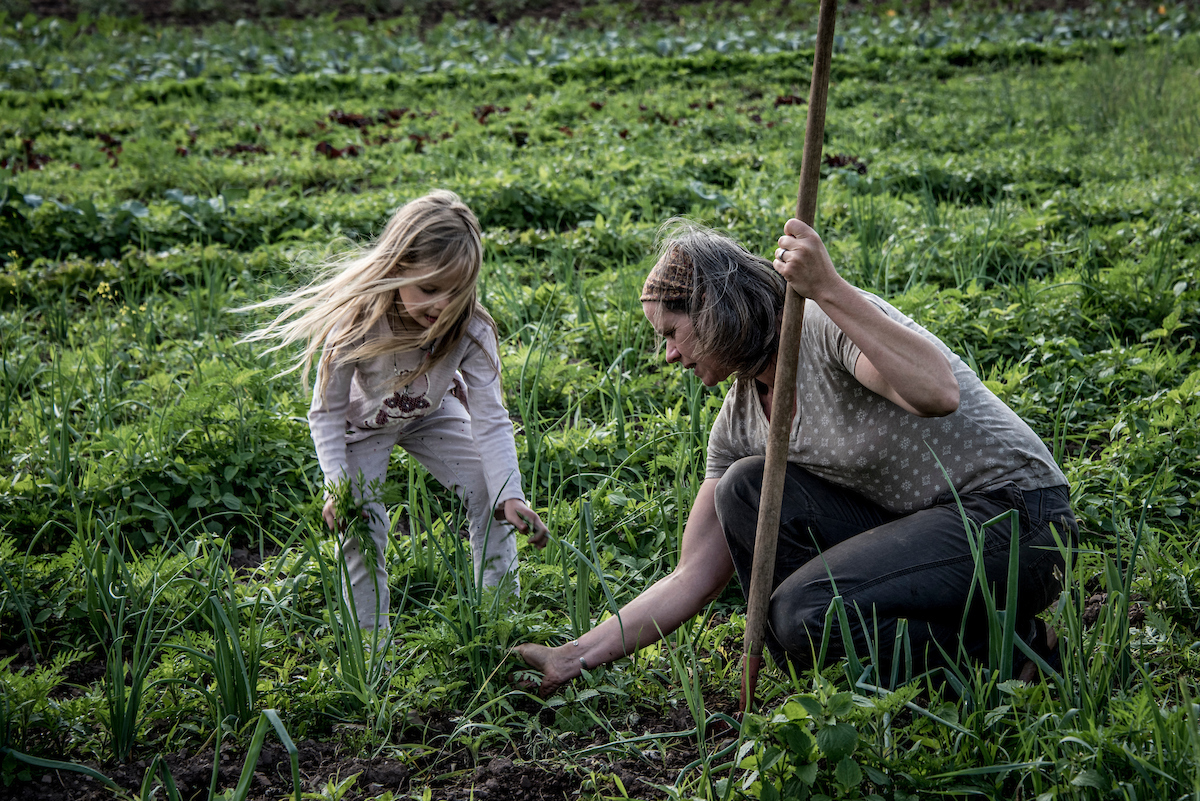
Western Maryland organic farmer Katharine Dubansky and her daughter Tessa, 6, work in the fields of Backbone Farm, which is surrounded by land leased in recent years by gas companies. Some leases have expired, but Katharine worries that if the state’s moratorium on fracking is lifted, the industry will move in and pollute the land, air, and streams.
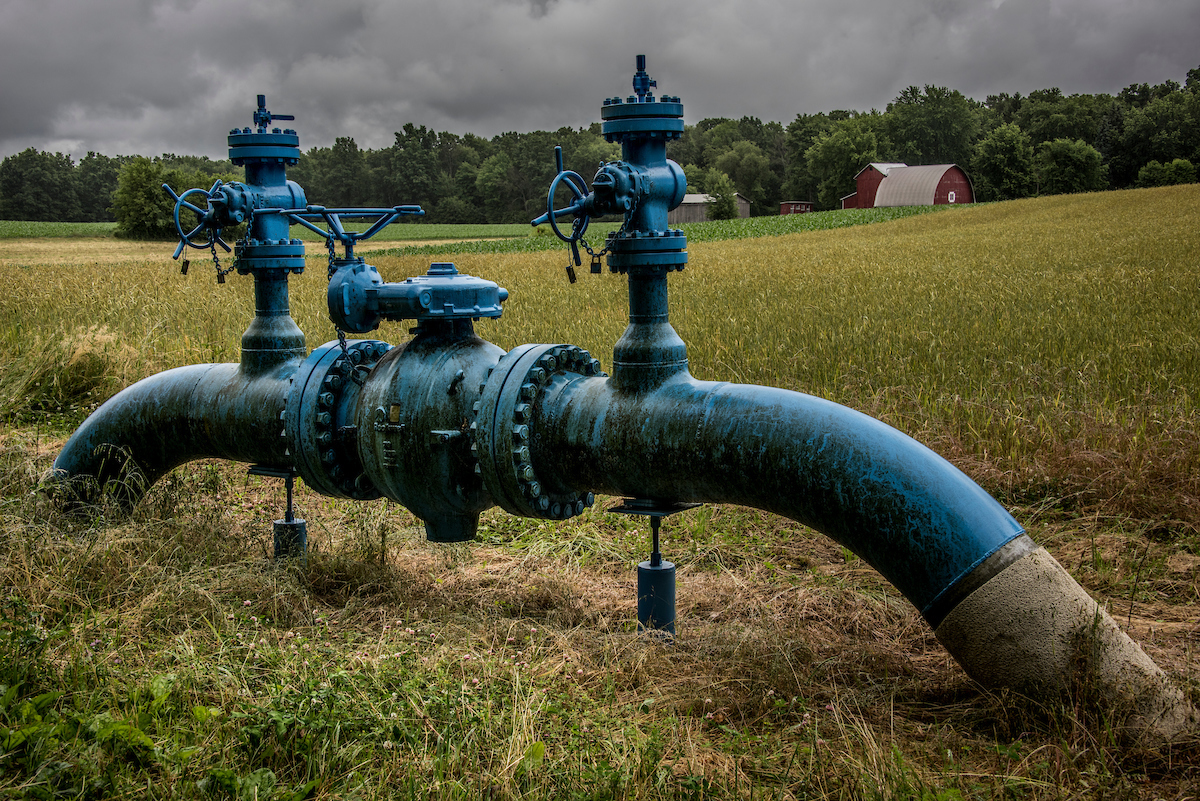
In Lawrence County, the rolling farm fields are increasingly broken up by the infrastructure of the oil and gas industry. A common sight are "pig launchers," elbows of pipe that protrude from the ground that often leak methane pollution.
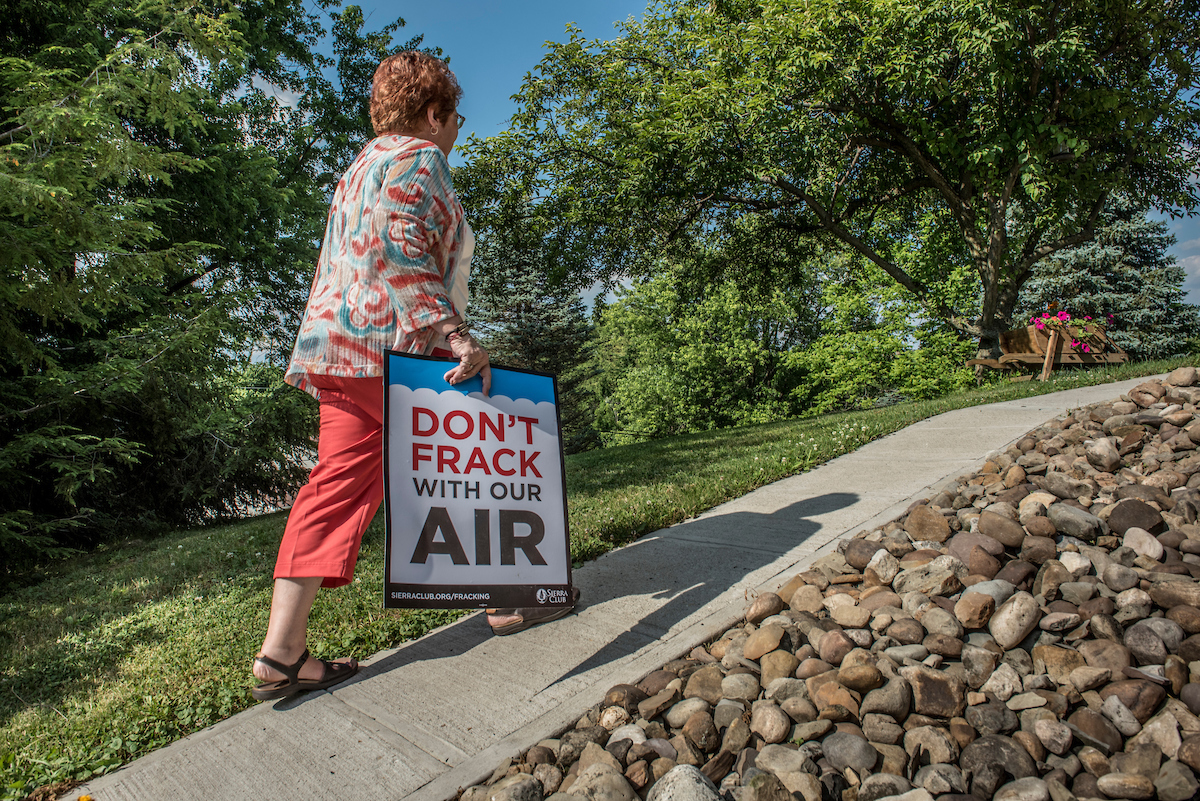
In Washington County, Karen Brockman worries that air pollution from enormous compressor stations being built near her home will jeopardize the health of her husband, Gary, who recently underwent a double lung transplant. She and her neighbors in Midway Borough are fighting to slow the industry’s growth and protect public health.
 The Magazine of The Sierra Club
The Magazine of The Sierra Club
